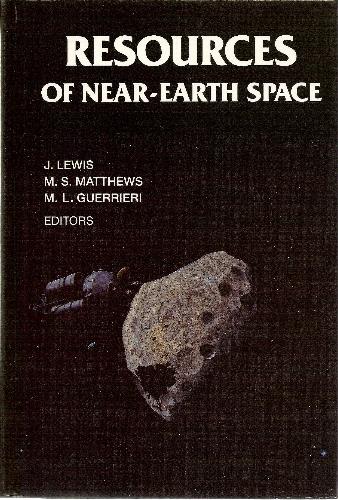
Resources of Near-Earth Space
by J. S. Lewis, M. S. Matthews
Publisher: University of Arizona Press 1993
ISBN/ASIN: 0816514046
ISBN-13: 9780816514045
Number of pages: 977
Description:
The parts of the solar system that are most accessible from Earth (the Moon, the near-Earth asteroids, and Mars and its moons) are rich in materials of great potential value to humanity. Immediate uses of these resources to manufacture propellants, structural metals, refractories, life-support fluids and glass can support future large-scale space activities. In the longterm, non-terrestrial sources of rare materials and energy may be of great importance here on Earth.
Download or read it online for free here:
Download link
(multiple PDF files)
Similar books
 Basaltic Volcanism on the Terrestrial Planets
Basaltic Volcanism on the Terrestrial Planets- Pergamon Press
The theme of this book is the study of basaltic volcanism on the terrestrial planets as a stage in planetary evolution: to use the eruption of lava from the interior of a planet as evidence of the thermal and chemical processes of the planet.
(9878 views)
 Views of the Solar System
Views of the Solar Systemby Calvin J. Hamilton
This page presents a vivid adventure unfolding the splendor of the Sun, planets, moons, comets, asteroids, and more. Discover the latest scientific information, or study the history of space exploration, scientific facts, graphics and videos.
(16727 views)
 To See the Unseen: A History of Planetary Radar Astronomy
To See the Unseen: A History of Planetary Radar Astronomyby Andrew J. Butrica - NASA History Division
A comprehensive history of this surprisingly significant scientific discipline. Quite rigorous and systematic in its methodology, To See the Unseen explores the development of the radar astronomy specialty in the larger community of scientists.
(12075 views)
 Voyager Encounters Jupiter
Voyager Encounters Jupiter- National Aeronautics and Space Administration
Passing by Jupiter in 1979, the Voyager spacecraft have collected an enormous amount of data that may prove to be a keystone in understanding our solar system. This publication provides an early look at the Jovian planetary system ...
(6113 views)